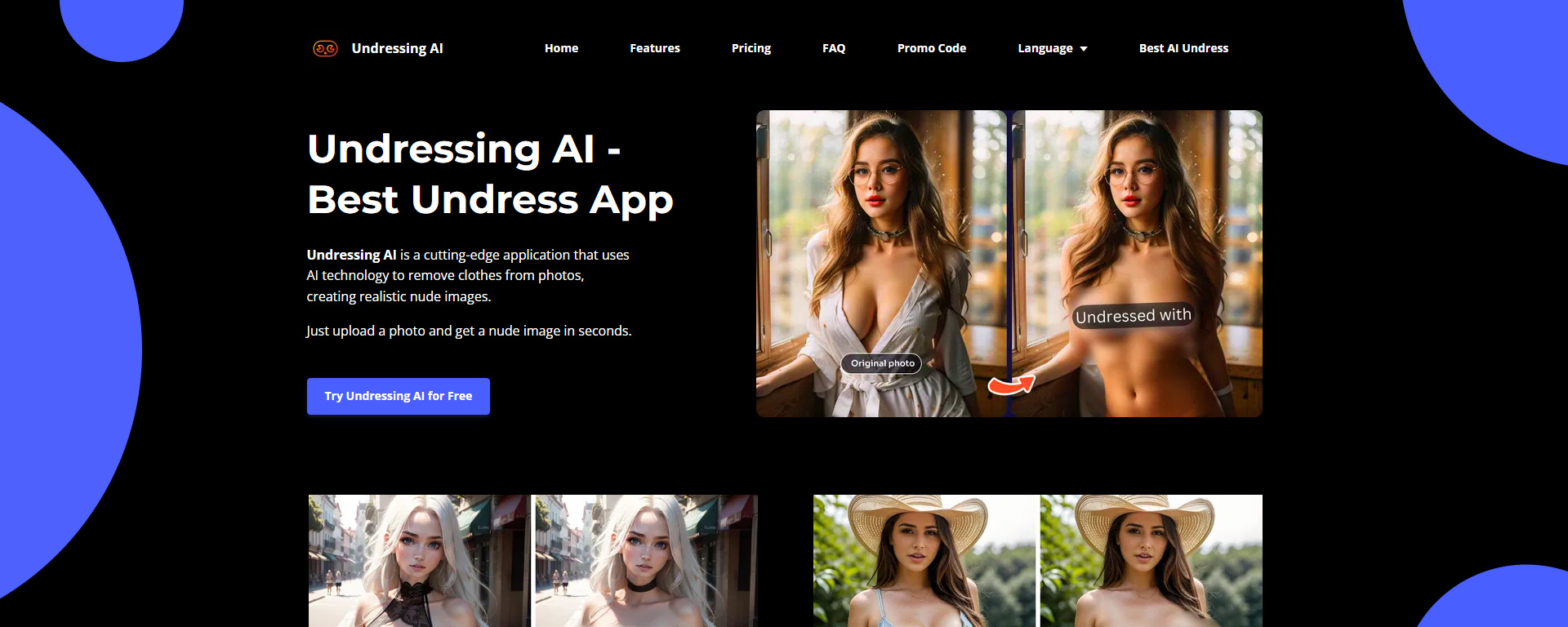Top AI Clothes Remover Tools: Free & Paid Undress AI Options
Is the digital world offering a glimpse into the future, or is it opening a Pandora's Box of ethical dilemmas? The proliferation of "undress AI" tools, capable of digitally removing clothing from images, is rapidly transforming the landscape of online content, sparking both fascination and significant concern.
The advent of artificial intelligence has undeniably ushered in an era of unprecedented technological capabilities. From self-driving cars to medical diagnoses, AI is reshaping industries and redefining possibilities. Within the realm of image manipulation, AI has unlocked new frontiers, offering users the ability to modify, enhance, and even completely alter visual content. Among these innovations are tools designed to remove clothing from images, often marketed as a means of artistic expression, entertainment, or even for specific professional applications. However, this technological leap comes with a complex web of ethical implications that demand careful consideration.
These tools, often operating under the banner of "undress AI," utilize sophisticated algorithms, including deep learning, to analyze and modify images. They're trained on vast datasets of visual information, allowing them to identify clothing and digitally remove it with varying degrees of accuracy. Platforms like Slazzer 3.0 and Undress VIP claim to provide this service, allowing users to upload images and receive an "undressed" version in a matter of seconds. These platforms are becoming increasingly popular, as they allow users to easily and quickly remove clothes from photos online. This technology isn't just limited to static images; some applications are even evolving to generate realistic modifications of photos, offering users the ability to explore virtual scenarios or create personalized content.
- Kannada Movies 2024 Reviews Where To Watch Movierulz Risks
- Itslunarliv Leaks What You Need To Know Hottest Content
The underlying technology behind these tools often relies on deep learning algorithms. These algorithms analyze the patterns, textures, and colors within an image to identify areas that represent clothing. They then digitally remove the clothing, often using techniques like inpainting to fill in the resulting gaps with plausible representations of the underlying body. The accuracy and realism of these results can vary significantly depending on the quality of the AI model, the complexity of the image, and the specific features of the clothing.
The promise of accessibility is a key selling point. Many of these tools offer free trials or even free versions, inviting users to experience the power of undress AI without upfront costs. The user experience is generally designed to be straightforward. Users simply upload an image, select the desired mode (e.g., "undressing" mode), and the AI takes over, processing the content and delivering the altered version. The speed of processing is another factor driving their popularity. Fast image processing with real-time results is a significant advantage in the fast-paced digital world.
The appeal of these tools isn't difficult to understand. The ability to alter images with such ease and speed opens up possibilities for various applications. However, the applications of these tools extend beyond harmless entertainment. The potential for misuse raises serious ethical concerns, especially regarding the privacy and safety of individuals.
- Hdhub4u Bollywood South Movies More Year Trends
- Adipurush Movierulz Controversy Reviews Movie News Today
The core of the ethical debate centers on consent, privacy, and the potential for exploitation. Without the explicit consent of the individual depicted in the image, the act of digitally undressing them is a violation of their privacy. This is further exacerbated by the ease with which these altered images can be created and disseminated, potentially leading to the unwanted sharing of intimate content. The potential for revenge porn or the creation of fabricated images for malicious purposes adds another layer of complexity to the ethical equation.
The ethical challenges of undress AI are further compounded by the potential for these tools to be used to create and spread deepfakes, which are realistic-looking images or videos of individuals that are not real. The ease with which these tools can be used to create deepfakes has raised serious concerns about the potential for these tools to be used for malicious purposes.
Beyond the ethical considerations, there are also questions about the accuracy and reliability of these tools. While the AI models are trained on vast datasets, they are not perfect. The results can vary depending on the quality of the image, the complexity of the scene, and the individual's body type. The AI is trained on a large dataset to ensure realistic results, but it primarily performs best with female subjects due to the nature of its training data. This can lead to unrealistic results and potentially contribute to harmful stereotypes.
The legal landscape surrounding undress AI is also evolving. As the technology becomes more sophisticated, legal frameworks are struggling to keep pace. There are currently no specific laws that directly address the creation and distribution of AI-generated nude images. However, existing laws regarding harassment, defamation, and image manipulation may apply depending on the specific circumstances.
It's essential to underscore the responsibility that comes with wielding such powerful technology. Understanding the limitations and potential pitfalls is paramount. Moreover, users must prioritize ethical considerations, respecting individual privacy and avoiding the use of these tools for any purpose that could cause harm or violate the rights of others.
As AI continues to advance, the conversation surrounding these tools will evolve. The challenge lies in finding a balance between technological progress and ethical responsibility. This requires ongoing dialogue, collaboration, and a commitment to developing ethical guidelines and legal frameworks that safeguard individual rights while fostering responsible innovation.
The future of "undress AI" remains uncertain. Its evolution hinges on the choices we make today choices that reflect our values, our commitment to privacy, and our understanding of the potential impact of technology on society. Responsible innovation, coupled with legal and ethical frameworks, will be vital to navigating the complex terrain that lies ahead.
| Feature | Details | Relevance |
|---|---|---|
| Tool Name | Slazzer 3.0, AI Image Magic Cleanup, Undress VIP, Undressher AI, undress.app | Examples of AI-powered tools for image manipulation. |
| Functionality | Digital removal of clothing from images. | Core function, defining the nature of the tools. |
| Technology | Deep learning algorithms. | Underlying technology enabling image modification. |
| Accuracy | Varies, depends on image quality and AI model; best with female subjects due to training data. | Highlights limitations and biases. |
| Accessibility | Free trials, premium plans, free versions available. | Commercial model of the tools. |
| Ethical Concerns | Consent, privacy, potential for misuse (revenge porn, deepfakes, exploitation). | Central topic of the discussion. |
| User Experience | Easy to use, quick processing. | Factors contributing to the popularity. |
| Legal Aspects | No specific laws addressing AI-generated nude images. | Legal complexities related to the tools. |
| Impact | Transforming digital imagery, ethical implications. | Broader influence of the tools. |
| Commercial | Premium plan starts at $9.99/month. | Commercial model of the tools. |
The discussion around "undress AI" is more than just about software; it's about ethics, privacy, and the very nature of reality in the digital age. As these tools continue to evolve, it's imperative to have open and honest conversations about their impact on our lives. This requires not just technological advancements but also a strong ethical compass.
- Telugu Movies Buzz Movierulz More Whats Streaming Now
- Best Kannada Movies Of 2025 What To Watch Where

UndressAPP.ai Review Free Trial, Features & Alternatives

Undress AI

Undressing AI Review Pricing, Free Trial & Best Alternatives